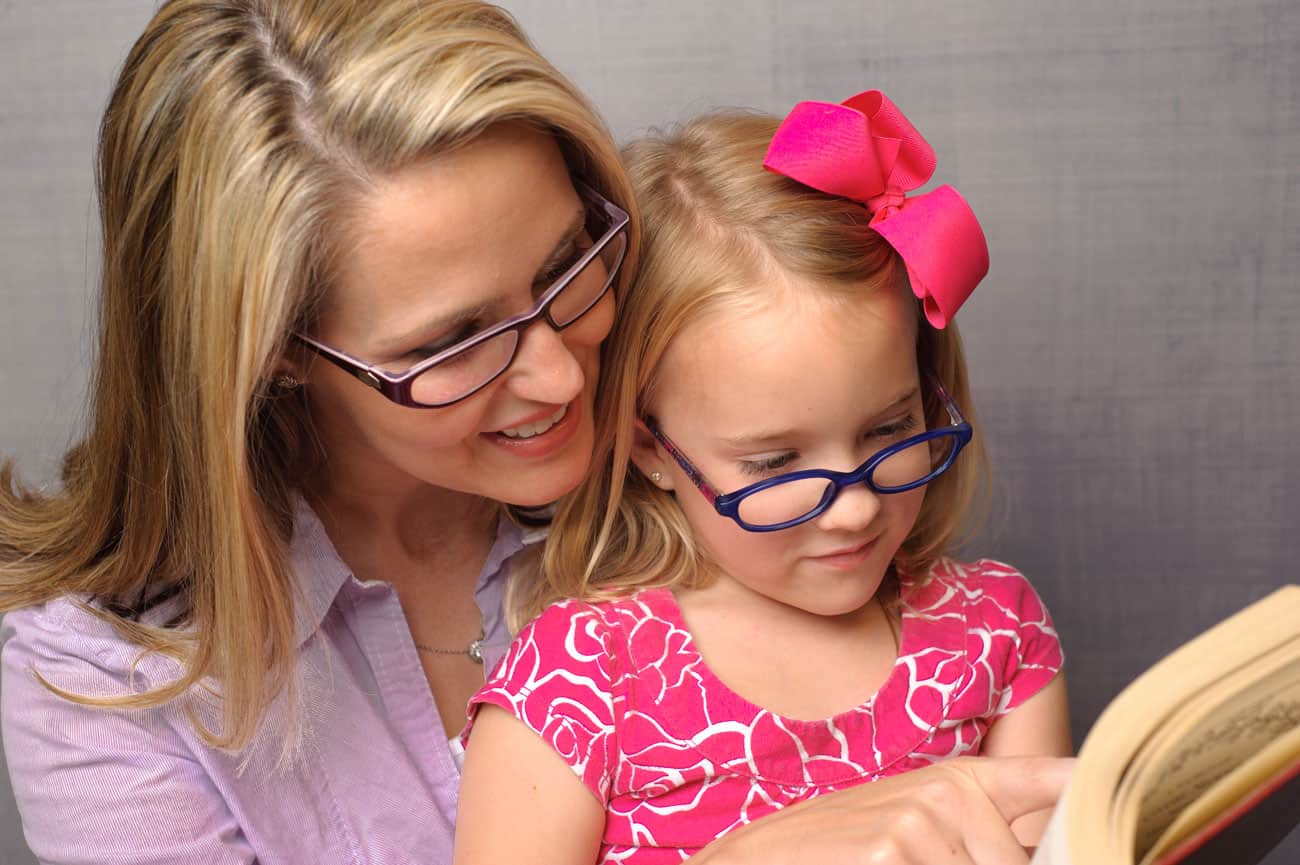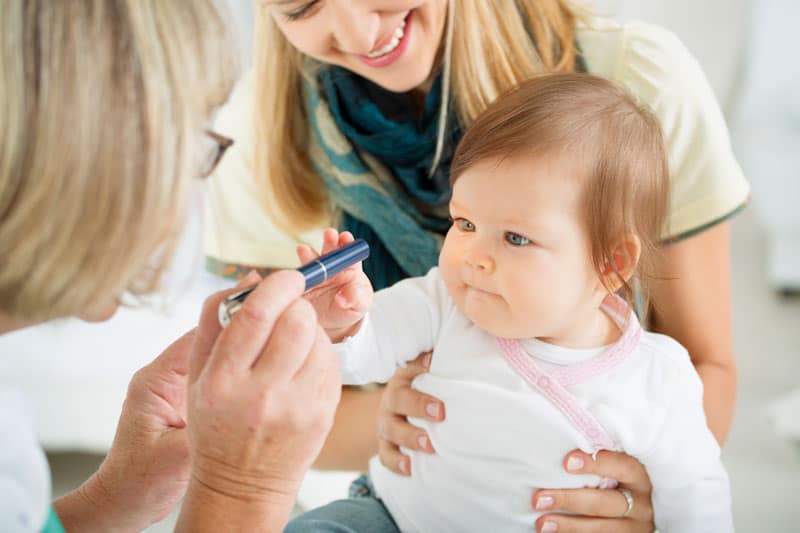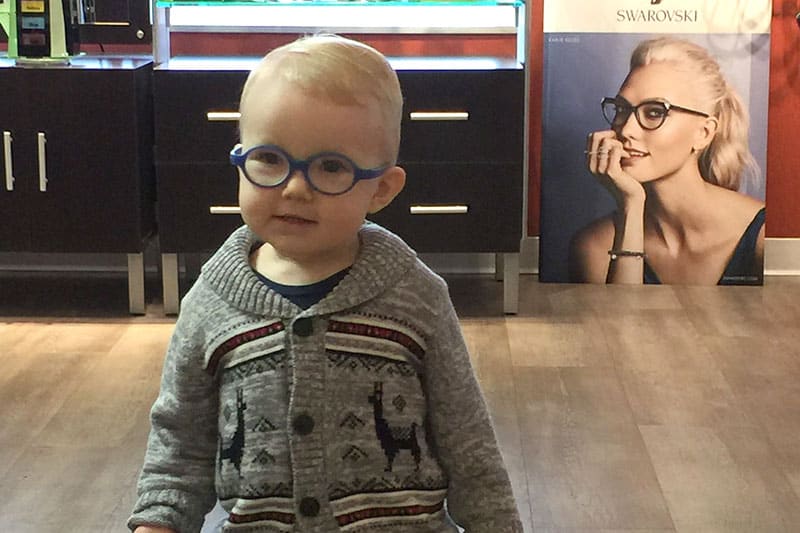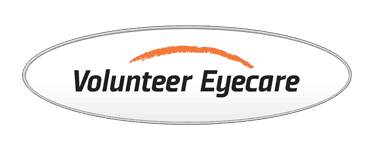
Pediatric Eyecare
We value children and know what an important role vision plays in their physical, cognitive, and social development. Uncorrected vision problems can impair child development, interfere with learning, and even lead to permanent vision loss; Let us help with early detection and treatment.
Infant Vision: Birth to 24 months
The AOA recommends your child’s first eye exam should at 6 – 12 months of age.* Parents should look for some common signs of eye and vision problems such as:
- Excessive tearing
- Red or encrusted eye lids
- Constant eye turning
- Extreme sensitivity to light
- Appearance of a white pupil

Preschool Vision: 2 to 5 years
The AOA recommends an eye exam at least once between the 3 and 5 years of age.* Parents should watch for signs that may indicate a vision problem, including:
- Sitting close to the TV or holding a book too close
- Squinting
- Tilting their head
- Covering an eye
- Frequently rubbing their eyes
- Short attention span for the child’s age
- Turning of an eye in or out
- Sensitivity to light
- Difficulty with eye-hand-body coordination when playing ball or bike riding
- Avoiding coloring activities, puzzles and other detailed activities

School-Age Vision: 6 to 18 years
The AOA recommends an eye exam before first grade and annually thereafter.* Signs that may indicate a child has a vision problem include:
- Complaints of discomfort and fatigue
- Frequent eye rubbing or blinking
- Short attention span
- Avoiding reading and other close activities
- Frequent headaches
- Covering one eye
- Tilting the head to one side
- Holding reading materials close to the face
- An eye turning in or out
- Seeing double
- Losing place when reading
- Difficulty remembering what he or she read
*If you notice any of these signs in your preschooler, arrange for a visit to your doctor of optometry. Here is a list of risk factors placing an infant, toddler, or child at significant risk for eye and vision problems:
- Prematurity, low birth weight, prolonged supplemental oxygen at birth
- Family history of myopia, amblyopia, strabismus, retinoblastoma, congenital cataracts, metabolic or genetic disease
- Infection of mother during pregnancy (e.g., rubella, toxoplasmosis, venereal disease, herpes, cytomegalovirus or human immunodeficiency virus)
- Maternal smoking, use of alcohol or illicit drug use during pregnancy
- Cortical visual impairment
- Difficult or assisted labor, which may be associated with fetal distress
- High or progressive refractive error
- Strabismus
- Anisometropia
- Academic performance problems
- Known or suspected neurodevelopmental disorders
- Systemic health conditions with potential ocular manifestations
- Wearing contact lenses
- Having functional vision in only one eye
- Eye surgery or previous eye injury
- Taking prescription or nonprescription drugs (e.g., over the counter medications, supplements, herbal remedies) with potential ocular side effects
* Source: www.aoa.org


